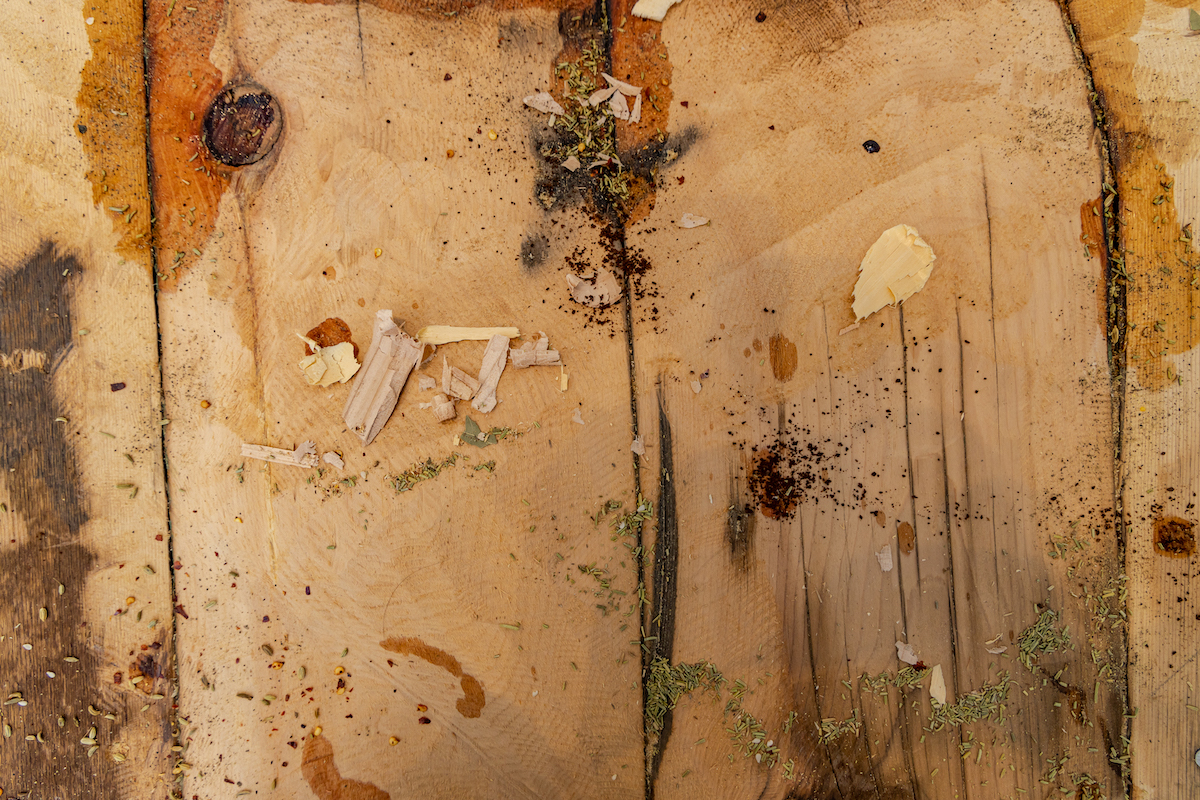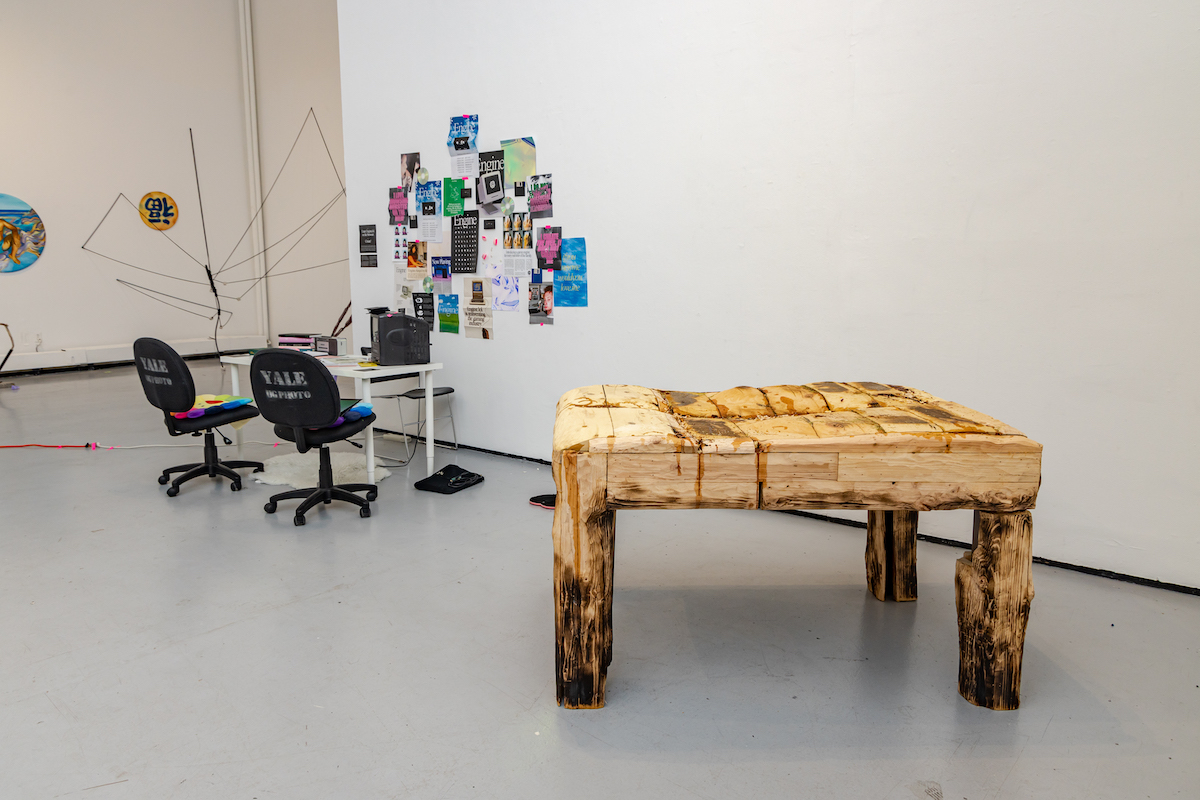Senior Thesis Exhibition 2022
Abeyaz Amir
Chia Amisola
Brice Bai
Merritt Barnwell
Onora Best
Maya Boateng
Ekow Buadu
Anne Chen
Mila Colizza
Alara Degirmenci
Ivory Fu
Pilar Galvan
Matt Herriot
Sidney Hirschman
Neo Khan
Daniel Kyungjae Lee
Sunnie Liu
Laura Padilla Castellanos
Anya Pertel
Sarah Saltzman
Sol Thompson
Julie Tran
Aliaksandra Tucha
Sofia Turner
Xavier
Jieun Yu
Senior Thesis Exhibition 2022
Abeyaz Amir
Chia Amisola
Brice Bai
Merritt Barnwell
Onora Best
Maya Boateng
Ekow Buadu
Anne Chen
Mila Colizza
Alara Degirmenci
Ivory Fu
Pilar Galvan
Matt Herriot
Sidney Hirschman
Neo Khan
Daniel Kyungjae Lee
Sunnie Liu
Laura Padilla Castellanos
Anya Pertel
Sarah Saltzman
Sol Thompson
Julie Tran
Aliaksandra Tucha
Sofia Turner
Xavier
Jieun Yu
Merritt Barnwell
Artwork
 1
1
 2
2
 3
3
 4
4
 5
5
 6
6
 if my table could remember
if my table could rememberwood (cedar and plywood), melted granulated sugar, shellac, coffee, basil, fennel seed, basil, bay leaves, oregano, pepper
Statement I am primarily a figurative artist. Either consciously or subconsciously, my art focuses and draws inspiration from the body. The underlying thread that runs through my work is an exploration of the dynamic spaces bodies create. I started as a hyper-realist painter focusing on capturing the exact likeness of my subjects, but found myself fascinated by the structures and, indeed, architectural forms that are created through the interaction of bodies. In addition, my practice attempts to question traditional ideas around portraiture through the exploration and intersection of different mediums including oil painting, printmaking, and wood-working. For my thesis, I have built a wooden dining-room table that represents a body. The dining room table has always been a difficult place for me and is a site where I believe social expectations are shaped and enforced. It is a site of communion, where people converse, eat meals, and celebrate special occasions, but it can also be where gender roles are enforced, where labor inequality is enacted, where people are silenced, and where power dynamics are tangible. For me, the table also represents a complicated state of womanhood on a very personal level that grapples with domestic labor, objectification, and the ability to have control over one’s own body. I wanted to attempt to convey the build up of memory and trauma of these moments and how this would appear through an anthropomorphized piece of furniture. I purchased a used table and constructed a wooden frame to completely cover it, creating a mosaic of different woods and grain qualities. I used my own body as a reference and carved the figurative shape that covers the table, with the goal of creating a piece of furniture that is a living body that remembers all that takes place around it. The table underneath remains intact and purposely untouched and protected, while its outer shell suffers from external decay. I have poured an accumulation of wood chips, spices, coffee, and melted sugar into the cracks and impurities of the wood, to resemble sap or scar tissue patching and covering wounds in order to signify memory and healing. There is also shellac weeping out of the cracks as well, mimicking water damage but also conveys the table’s emotional state. The surface has been sanded and carved to expose the strained muscles of the table’s form and to illustrate decay and wear over time.
Student

table, piece, feel, wood, thinking, body, surface, talking, carving, material, crested, remind, photographs, chairs, wooden table, strange, building, tear, long
"There's this painting by Frida KahloI think I showed in my last presentation called, 'The Wounded Table'. And it's like her body is the table and it's the same body, with all her pain and legs are literally her legs and arms holding her up and like holding her marriage. It went missing so there's only a photograph of it. So it's not super detailed documentation. But I was really inspired by that, because I just have a really complicated conflicted relationship with the dining room table. And it's never been a place of comfort."
“And I imagine those bits of food and crumbs to be like, also the conversation like words or like lessons that were taught or just like, situations that took place that the table remembers, because I think that it's not just a piece of furniture that we sit at–it's has memory, and when we're, when we sit there, it all comes back.”
“Ursula von Rydingsvard. She's like my favorite artist of all time, I don't think that will ever change. But she makes these like, female forms out of wood and graph and she rubs it with graphite after, but they're like, monstrous–they're giants. And they're very heavy, but also very spindly. So they're strong, but also very vulnerable. And she breaks the piece into like hundreds of little pieces. So she can really get detailed about everything. So instead of trying to like work on the whole thing as a whole piece, I'm going to break it up into fragments."
“It's also like a very, very personal thing and making like, very public, and there's a lot of things connected to it. And I just felt like that, at first, I was gonna do like the bridge, just because I wanted my body to be the shape of a table like bearing the weight of my family.”
“I've always been an observer in life, like more than a participant, which is a weird thing to say, but I just really like watching and being around people and maybe–not, not a creepy way–but just like I really like observing dynamics.”